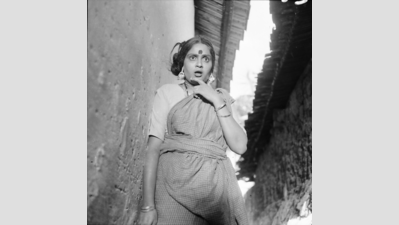ARTICLE AD BOX

Vadivukkarasi as the bitter wife in ‘Muthal Mariyathai’ (1985). Photo by Gnanam
When director Bharathiraaja offered Vadivukkarasi a role in ‘Muthal Mariyathai’ (1985), she was on cloud nine as she was being paired opposite Sivaji Ganesan, which was every heroine’s dream at the time. She imagined herself in a role like K R Vijaya’s in ‘Thangappathakkam’ (1974), the demure wife draped in silk and gold.But then came the shocker. Her character, Ponnatha, was that of an embittered village woman who constantly berates her husband Malaichami (Sivaji). At the time, she openly said she hated the role.
Ironically, it became her most memorable performance, and for years after, Vadivukkarasi would thank Bharathiraaja for giving her the role of a lifetime.Four decades later, the industry rarely allows women to sink their teeth into negative roles, preferring to cast them as mothers, daughters or love interests.Actor-politician Khushbhu, leading lady of the 1990s, who now gets cast in mother roles opposite heroes who are barely five years younger than her, says she longs for more layered roles. “I want to play a solid negative character,” says Khushbu. “I want people to hate my character’s guts.”Bollywood, she says, gives opportunities to women of her age, giving the example of Shabana Azmi in ‘Dabba Cartel’, a series released earlier this year.
“I wonder why Kollywood is not creating roles for 50-pluses. The closest Kollywood came to it was ‘Andhagan’, the Tamil remake of the Hindi film ‘Andhadhun’ (2024), where Simran plays a character who murders her husband,” she says. Rachita Ram also got lucky early in her career with a negative role in Lokesh Kanagaraj’s ‘Coolie’, released this year.“Many actresses who played negative shades have drawn crowds to packed theatres,” says actor Madhuvanthi Arun.
“An element of surprise is always welcomed. In the 1992 film ‘Mannan’, Vijayashanthi was cast opposite Rajinikanth. She played Shanthi Devi, an arrogant industrialist determined to defeat her husband, who works under her, and carried if off well,” says Madhuvanthi, who is Rajinikanth’s niece.Vijayashanthi had initially turned down ‘Mannan’ because the role required her to slap the superstar. After much persuasion from director P Vasu and Rajinikanth, she agreed.
The gamble paid off — her already successful career skyrocketed.“Scripts like this are rarely explored in Kollywood. We have a formula, which we believe draws the masses’ attention. But writers need to keep exploring negative roles for women as well,” says Madhuvanthi. “Many actors grew through trial and error. Take Ramya Krishnan, for instance. She debuted opposite my father Y G Mahendran in ‘Vellai Manasu’ in 1985 as his heroine but her career best came 14 years later when she was cast as the vengeful Neelambari in ‘Padayappa’.
Directors must think out of the box to tap into the potential of actresses.”Kasthuri says serials offer more scope for antagonist roles. “What the big screen failed to do, the small screen turned into its victory template. We get to play characters who are either loved or hated, but popular either way,” says the actor, who has been cast in a “bloodthirsty” negative role in a Telugu film.But sometimes things may not go as planned. In the 2006 erotic thriller ‘Uyir’, Sangeetha played Srikanth’s sister-in-law, a woman who develops feelings for him and resorts to extreme measures when her love is not reciprocated.She admits she was initially skeptical about taking on the role though the director Samy’s storyline felt unique. “You cannot interfere in a director’s creative freedom. The movie was a hit, but the role didn’t take my career forward.”‘We wouldn’t have Ramayana without Shurpanakha’ollywood actress Helen was one of the few who helped create a villain or vamp persona in the past. It was primarily because heroines who resisted ‘glamorous’ roles left space for others to step in as the ‘bad women’ on screen. Their characters were usually bumped off to save the villain or hero. In Kollywood, we had Silk Smitha, Jayamalini and Anuradha. Movies with just one ‘Silk’ song would rake in money. Now we rarely see this, since heroines do the so-called glamorous roles.
But we must remember, we wouldn’t have gotten Ramayana without Shurpanakha—K Hariharan, director who has made more than 130 documentaries, and authored ‘Kamal Haasan: A Cinematic Journey’
| WHEN NEGATIVE TURNED CAREER POSITIVES K Bhagyaraj’s ‘Enga Chinna Rasa’ (1987) revived C R Saraswathi’s career with her role as Nagamani, a conniving stepmother who exploits a devoted boy and later tries to kill him. Despite the powerful performance, Saraswathi was not typecast as a villain and went on to play other character roles Director K Balachander, known for drawing out unconventional shades in actors, made headlines with ‘Poova Thalaiya’ (1969), which featured a power struggle between a scheming S Varalaxmi and Jai Shankar, roles that their overshadowed the main characters |
ALSO READ: Are character actors disappearing from Tamil cinema?



.png)
.png)
.png)
















 5 hours ago
4
5 hours ago
4







 English (US) ·
English (US) ·